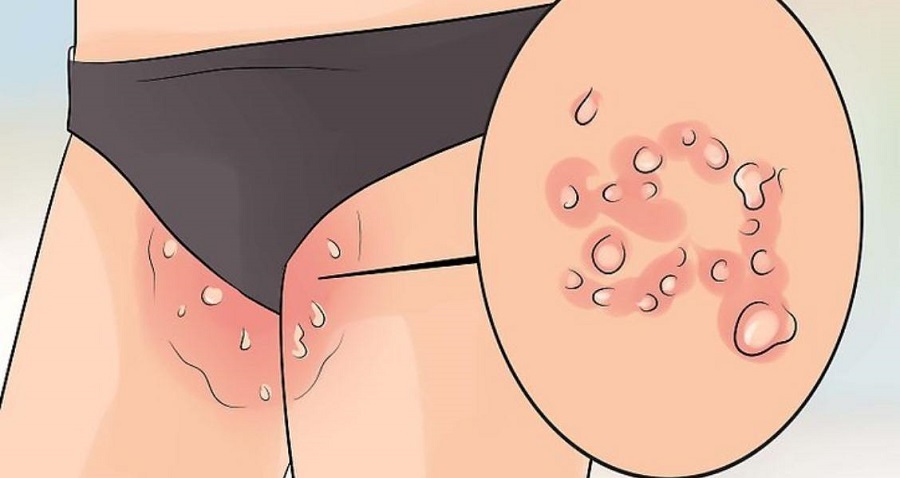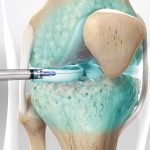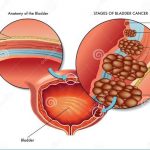What is Groin Fungus (Tinea Cruris)?
Groin Fungus or Tinea Cruris is a disease characterized by a feeling of redness, itching and dandruff caused by a fungal community called dermatophytes in and around the groin area.
While it can be transmitted from a person infected with dermatophyte fungi, it can also be transmitted from animals or soil.
Inguinal fungus, which usually starts on the inner side of the calf, causes bilateral itching and redness. If left untreated, groin fungus can spread to other parts of the body, but it is very rare for it to spread to the genitals. It can generally spread around the hips or hips, around the belly button and around the anus.
The fact that the left testicle is located lower causes the left side of the groin area to become more airless. Therefore, it is quite likely that groin fungus, which is a superficial fungal disease, starts on the left side. Inguinal fungus, which starts on the left side, usually spreads. And it becomes double-edged.
In this disease, which is more common in men and known as groin fungus;
- Sweating,
- Hot,
- Obesity
- or always walking around in a wet swimsuit
It paves the way for the development of groin fungus in men. These risk factors need to be corrected to prevent recurrence.
What are The Types Of Fungi That Cause Groin Fungus (Tinea Cruris) ?
-
Tinea Cruris:
It is also known as the main type of fungus that causes the disease caused by dermatophyte fungi. It has the ability to reproduce quickly when suitable conditions occur.
-
Inguinal Candidiasis:
Formed by Candida type fungi, it affects all channels of the digestive system, from the mouth to the intestine. And it is a fungus that can reproduce in all flora.
Candida fungus, which can cause many disorders, is also characterized by itching complaints.
-
Tinea Versicolor:
It is usually related to the formation of light red or dark brown spots caused by Malesessia furfur. It causes uneven skin tone.
Although the progression and proliferation of groin fungus caused by these three fungal species varies in each individual, the complaints are similar.
What Are The Causes Of Groin Fungus (Tinea Cruris)?
Groin fungus occurs as a result of the growth of fungi due to the moist and warm conditions in the groin area.
Some reasons are:
- Sweating, excessive sweating in the groin area creates a suitable environment for the growth of fungi. This can cause groin fungus.
- It may occur due to hot climate conditions, humidity and excessive sweating.
- Tight clothing reduces ventilation in the groin area, creating a humid and hot environment. This provides a suitable ground for fungi to grow.
- Wearing wet clothes, such as wet clothes and sweaty underwear, can cause moisture to accumulate in the groin area and cause fungi to grow.
- Contagion and transmission of fungi from another infected person can also cause groin fungus. Using shared items can also cause contamination.
- Fungal infections are more common in people with weak immune systems.
- The use of antibiotics, long-term use of antibiotics causes the natural bacteria in the body to be killed. This can cause fungi to multiply and cause infections.
- Obesity and excess weight can cause groin fungus.
What are The Symptoms of Groin Fungus (Tinea Cruris)?
Symptoms of groin yeast infection usually begin in the groin area and can spread to the surrounding area.
These symptoms may include:
-
Itching:
At the beginning of the infection, severe itching may occur in the area. Itching may become worse as the infection spreads.
-
Redness:
A red rash may appear in the affected area due to fungal infection.
-
Peeling:
Mild or severe peeling of the skin may occur in the groin area. The skin may appear scaly or crusty.
-
Bubbles:
In some cases, blisters may form and these blisters may become infected and break open, becoming sores.
-
Pain and Discomfort:
You may feel slight pain or discomfort in the infected area.
-
Border Lines:
Distinctive demarcation lines may be visible at the edges of the infected area. These lines may often be red or raised.
-
Skin Thickening:
Chronic groin fungal infections can cause skin thickening and changes in skin color.
Inguinal fungal infection usually starts from the parts in contact with the genitals and is usually unilateral.
However, over time, it may spread to the other groin area. Because of the itching and discomfort, it is important to avoid scratching the infected area.
Because this may cause the infection to spread and infect other areas.
If you suspect any of the above-mentioned symptoms, it is recommended that you consult a dermatologist or healthcare professional.
It is important to seek professional help for accurate diagnosis and appropriate treatment.
In Whom is Groin Fungus (Tinea Cruris) Most Common?
Inguinal fungus is a disease that can be seen in both men and women. Especially in persistent groin fungus and similar cases, it is important to first change the person’s lifestyle and habits.
Individuals with a high risk of developing groin fungus can be listed as follows:
- Inguinal fungus is more common in both genders, especially in overweight individuals.
- Humidity and wetness due to perspiration provide a favorable environment for the formation and proliferation of fungal culture. And it is also seen in individuals living in humid areas.
- Likewise, groin fungus is frequently seen in athletes due to excessive sweating.
- Especially individuals who frequently use places such as hot springs and spas may be considered in the risk group for groin fungus.
- People with unhealthy lifestyles and low immunity have a high risk of contracting groin fungus, as with any disease.
Diagnosis of Groin Fungus (Tinea Cruris)
Inguinal fungus is a disease that can be diagnosed by clinical appearance. However, various methods can be used to clarify the diagnosis. A definitive diagnosis is made by performing procedures such as microscopic examination and examination of fungal culture.
-
Microscopic Examination:
- In this procedure, which is an important diagnostic method for diagnosing groin fungus, a certain amount of material is taken from the edge of the lesion.
- 20% Potassium Hydroxide is dropped onto this material. After the potassium hydroxide solution is dripped, there is a waiting period of 20 – 30 minutes.
The main purpose of using potassium hydroxide is:
- It is the visualization of spore structures and special parts called hyphae, which are necessary for the reproduction of the small creatures that cause groin fungus. Diagnosis can be made when spores and hypha structure are seen.
-
Cultural Review:
- It is a diagnostic method used to make a definitive diagnosis and to clearly learn the type of fungus.
- Sabouraud medium is used.
- Growing the sample taken from the fungus in this special medium is very important to find the type of fungus.
-
Wood Light:
- In this diagnostic method where ultraviolet A rays are used, ultraviolet rays pass through a filter containing nickel oxide.
- This ray passing through the filter takes on different colors depending on the disease agent. In this method, P.
- Versicolor takes on a pale yellow color, while Microsporum species can turn green or yellow in this method.
- In Trichophyton and Epidermophyton infections, no color may be observed.
What are The Treatments For Groin Fungus (Tinea Cruris)?
Treatment of groin fungus (Tinea Cruris) is usually done with topical antifungal medications.
These medications help control the infection by preventing the growth and spread of the fungus.
Some preventive measures also need to be taken to prevent recurrence of infection.
Commonly used methods in the treatment of groin fungus are:
-
Topical Antifungal Creams or Ointments:
These types of medications stop the growth of the fungus. And it works effectively by treating the infection.
Products containing chlortrimazole, miconazole, terbinafine or ketoconazole are usually used.
Treatment duration usually varies from 1 to 4 weeks. And it is determined by the doctor according to the severity of the infection.
-
Anti-Itching Medicines:
To relieve itching, your doctor may recommend a cream or ointment containing corticosteroids to relieve pain and itching. However, corticosteroid creams can cause side effects on the skin with long-term use, so it is important to follow your doctor’s directions.
-
Proper Hygiene:
When treating fungal infections and preventing recurrence, it is important to keep the groin area dry and clean.
Humid environments cause fungi to grow.
Therefore, use a soft towel when drying the groin area. And change wet clothes as quickly as possible.
-
Appropriate Clothing:
Tight, synthetic or tight underwear can encourage fungal infections. Therefore, using cotton and loose-fitting underwear can reduce the risk of infection.
-
Avoid Sharing Common Items:
Avoiding sharing common items, such as towels, underwear, and other personal items, helps prevent spreading the fungus to others.
Some Precautions to Prevent Groin Fungus (Tinea Cruris)
-
Shower Every Day:
Do not wait a long time without showering after sweating or exercising. Use mild soaps and water to wash. Avoid using soaps with antibacterial properties or deodorants.
-
Always Keep Your Groin Clean and Dry:
If you find that you are susceptible to groin fungus, cover your groin area with anti-fungal drying powder after bathing or showering.
-
Avoid Using Clothes and Underwear That Irritate the Area:
Choose comfortable clothes. Wear boxers instead of panties.
-
Wash Underwear Frequently:
Also, never share towels or clothing with others, especially when the infection is in the active stage.
Groin Fungus can be spread by contact with unwashed clothing.
Do not dry the rest of your body with the same towel you used to dry your groin area. Otherwise, it may cause the infection to spread.
-
Wear Your Socks Before Wearing Your Underwear:
If you also have fungus on your feet, put on socks before putting your feet in contact with other clothing. Doing this prevents the fungus from spreading from your feet to your groin.
-
Don’t Spend a Long Time in a Wet Swimsuit, Take It Off Immediately:
Don’t just hang your swimsuit and let it dry. You should definitely wash it. Take off your swimsuit immediately, without leaving it wet, and put on something dry.
-
Carrying Wet or Sweaty Clothes in Your Gym Bag:
Also, don’t store damp clothes in your closet. Instead, you should wash your gym clothes after every use.






